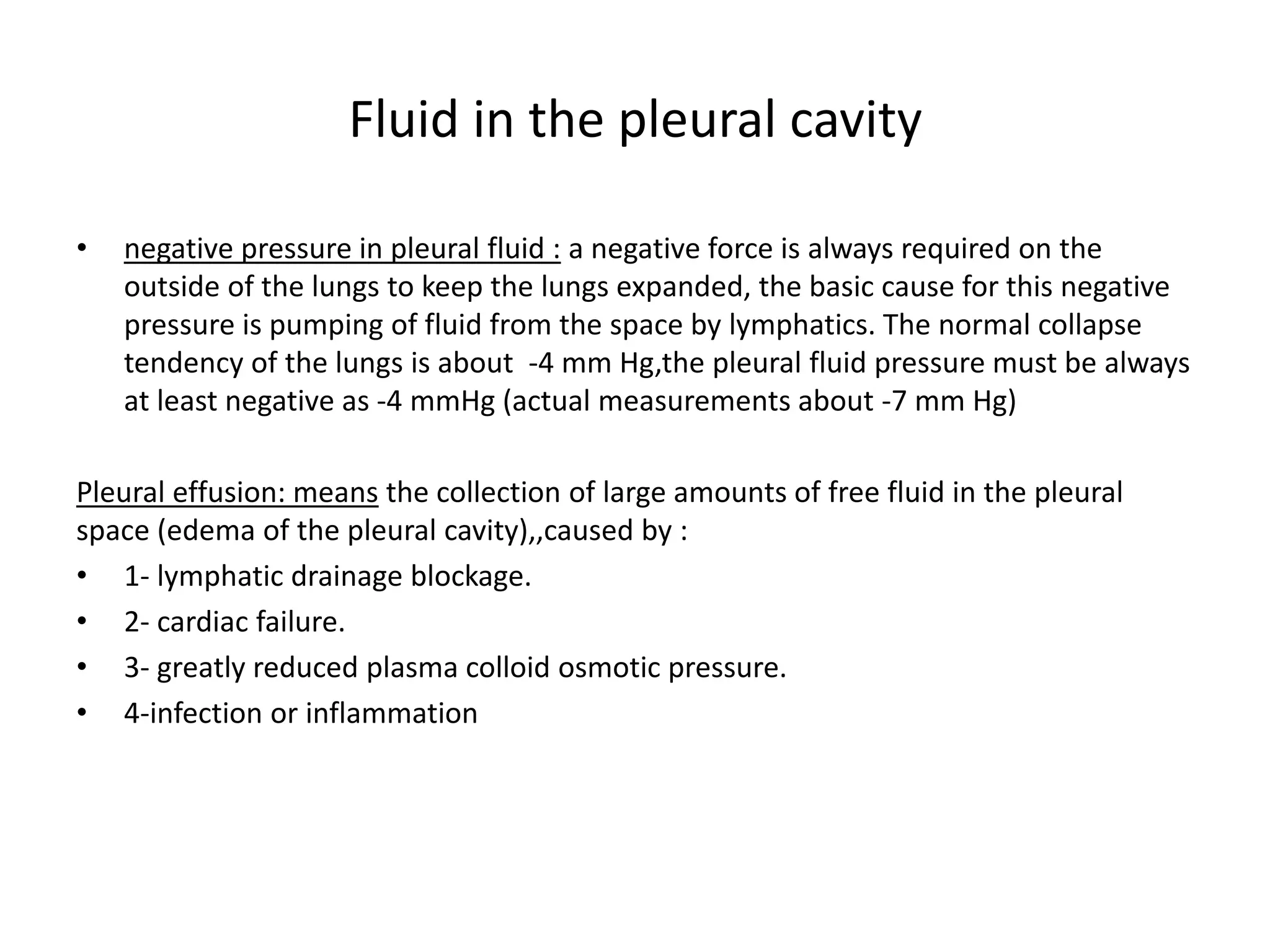The document summarizes the physiology of the pulmonary circulatory system in three parts:
1) It describes the anatomy of the pulmonary vessels and pressures within the pulmonary system. The pulmonary artery branches into two main vessels with low pressure, distributing deoxygenated blood to the lungs.
2) It explains fluid dynamics within the lungs and how pulmonary edema develops if pressures rise above safety thresholds. The lungs maintain a negative interstitial pressure to prevent fluid buildup.
3) It covers fluid in the pleural cavity and how a negative pressure is needed to keep the lungs expanded via lymphatic drainage and fluid reabsorption. Pleural effusions can occur if drainage is blocked.





























